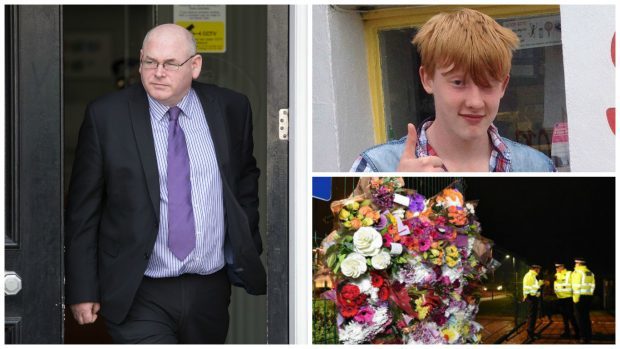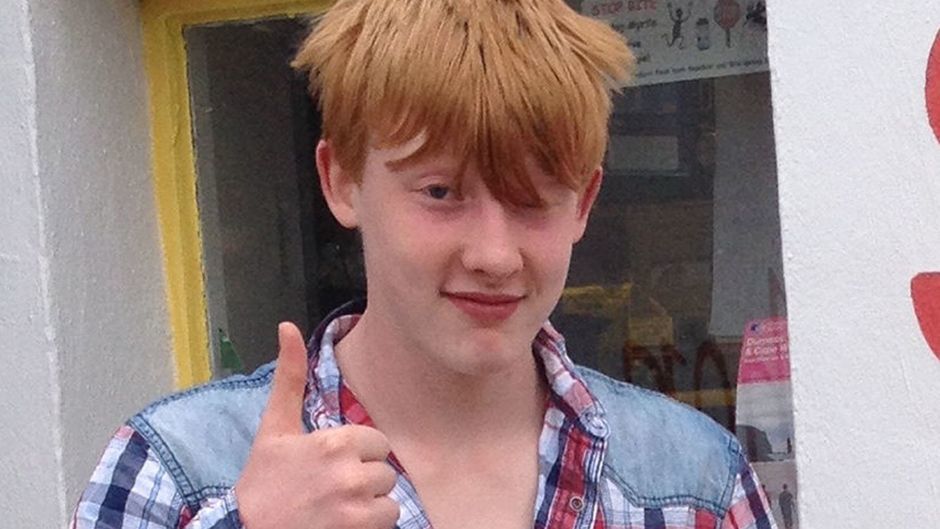Internet searches on the difference between homicide and murder were made from the laptop of the teenager accused of murdering Bailey Gwynne.
Charles Bruce, a computer forensic analyst, told the High Court in Aberdeen that he carried out an examination of the computer belonging to the schoolboy in the days following his arrest.
On October 29, a day after the fatal stabbing at Cults Academy, the youth’s father handed over his son’s Acer laptop to police.
And when its internet history was examined it was discovered a number of searches had been made on the device in relation to stabbings and murders.
Mr Bruce, 52, told the court he found Google searches on the laptop for “illegal knives UK”, “Aberdeen stabbings deaths per 1,000?” and “knife merchant” were made in the months leading up to the tragedy.
He said the computer had also accessed a YouTube video with a URL of “14-year-old Bronx student stabs bully to death outside school”.
The web pages were accessed on various dates between April and October 2015.
The court heard that analysts could not tell who had used the laptop, only that the data had been viewed. However, the teenager was a known user of the device, as was his brother.
Another search, carried out exactly three weeks before the incident at the school, was for “how to get rid of someone annoying”.
And in September, just one month before the killing, the words “difference between homicide and murder” were searched on the internet.
Representing the teenager, who was dressed all in black as he sat in the dock yesterday, senior counsel Ian Duguid QC suggested the internet searches had been taken out of context and selectively picked out by the police with key terms.
He also asked Mr Bruce what follow-up work was carried out to check the web history.
Mr Duguid asked: “Did you look up what was featured? Did anyone try to see what these links were?”
Mr Bruce replied: “I was just requested to produce what I was asked to produce. I was under the impression that the inquiry team would be looking at these links.”
In reference to the YouTube link Mr Duguid asked the forensic examiner if he was aware the video was “a cartoon”.
He said he had not viewed the link.
He also asked if Mr Bruce was aware the search for “how to get rid of someone annoying” brought up an inquiry by a nine-year-old.
He said: “Did anyone try to see what that brings up? It brings up a page which asks how to deal with an annoying friend and it features questions from a nine-year-old. Some of the suggestions are ‘make him go away’, ‘stop speaking to him’ and ‘be mean’.
“These are the responses. It seems like no one has followed through in these searches to see what they are.”
Mr Bruce replied: “It would appear so.”
The court also heard evidence from forensic scientist Sarah Jones.
She told the jury of seven men and eight women that she was asked to carry out tests on a knife which was recovered from a waste bin in the school following the attack.
She said during her examination of the weapon she found blood on the three-and-a quarter inch cutting edge which matched the DNA of Bailey.
Ms Jones also tested swabs taken from the hands of the accused, where she found traces of blood on his left hand.
She said the blood also matched the DNA of Bailey.
Further examination carried out on Bailey’s clothing showed a cut which penetrated both his shirt and blazer.
Ms Jones told the court the cut was around three-quarters of an inch long and was on the left side of the clothing underneath the breast pocket.
The court heard in her report on the knife she concluded the weapon found in the school could have been responsible for making the cuts to Bailey’s clothing.
There was no damage to the accused’s clothing, she said, nor was there any blood found on his right hand or the knife handle.
In cross-examination Mr Duguid put it to the witness that it was possible his client may have come into contact with Bailey’s blood by trying to help him.
She agreed this was possible and said she could not say for certain how it came to be there.
The trial, before judge Lady Stacey, continues.

